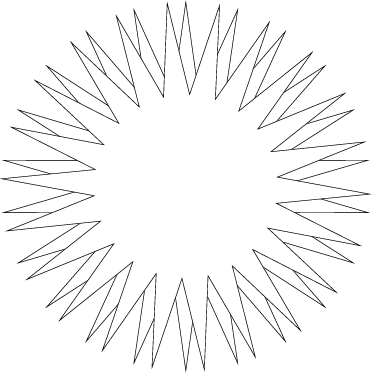
All visible objects, man, are but as pasteboard masks. But in each event—in the living act, the undoubted deed—there, some unknown but still reasoning thing puts forth the mouldings of its features from behind the unreasoning mask. If man will strike, strike through the mask! —H. Melville, Moby-Dick
Fuck Covid-19, fuck Ebola, fuck SARS, HIV, flu, smallpox.
Fuck you virus—you murderer of mothers, fathers, and friends. You’ve taken away my city. And I’d curse you some more if it meant a thing to you. But what is meaning to a string of code, a handful of genes in a protein jacket?
“Strike through the mask!” Ahab says. But what is wearing the mask? Behind the surgical mask, in this case, you are the morgue in the trailer outside my hospital. You are the “curve”—as if we lived on a two-dimensional graph.
I miss the moment when the food comes to the table, the moment when you touch someone on the shoulder because you’re happy they’re there. I miss daydreaming when I’m sitting in a group.
Dear virus, Why are you?
Virus says, Because I must.
I have now cracked my brain on viruses for two months. Life has been curtailed by a particle that has no will as we understand it, but travels through people and their families and suffocates them. How do you parse four months in geological time? In geological time, we’re brothers—shuffled and mixed.
I have been involved in the study of biology in one way or another for 15 years, and I cannot seem to reconcile the human-scale with an evolutionary understanding of you, virus. Not right now. One reason I eventually moved away from science journalism was because basic research was in some ways too abstract. Watson and Crick running around Cambridge, reading papers, stealing glimpses of X-ray crystallography, making models of molecules, and then making bold proclamations about the secrets of life.
Science happens on a decades-level timescale. Go into a lab and watch what people do—move liquid back and forth, make spreadsheets. Unless you have a head for abstraction, the drive, and a good amount of patience, individual actions only amount to so much. I first fell in love with biodesign because it made the abstract tangible. Here is a brick—it was grown with bacteria. Feel its weight. Well, there’s a lot of ways to feel biology. Right now, we’re feeling it in body bags, shuttered stores, and the aching solitude of social distancing.
But there’s also another view. Take a philosopher’s stance and a virus becomes a profound thing. Just a couple dozen genes do battle with our 20,000 and they liquefy a cell. Yet if they’re too successful they’ll kill us all and eradicate themselves in the process, so they exist in some sort of balance with life—a deadly balance, but not a wholly unproductive one if you’re thinking about viruses in deep time.
On the order of 3 billion years, you can view viruses as life’s twin brother. There’s no Jacob without Esau. There’s no life without viruses. In the primordial goo it was easier, energetically and otherwise, to borrow the replication machinery of a neighbor, rather than carrying around one’s own. And so emerged the first parasite, a proto-virus, a string of RNA that could infect early life to create more of itself. Game theorists call these “cheaters,” and computer models of early life show that they necessarily appear.
Over billions of years, life and viruses have traded code back and forth so many times, that one theory posits that even DNA itself, the fundamental language of every living thing, was a viral contribution. And the way viruses code for their protein coat—their defining attribute under the electron microscope—was stolen from life around 20 times over the course of evolution. Is the plant whose genome is 90-percent derived from virus DNA more virus than plant? Humans have more virus DNA than coding genes (8 percent versus 1.5 percent). So what are we?
We are living in a fever dream. On the scale of minutes and hours, it’s a tragedy. On the scale of mega-anna, it’s a deadly mutualism. And I can’t help but add that it’s not just evolution that has exploited this struggle, but humanity too. Scientists are using viruses to do all sorts of things like make vaccines, gene therapies, bioengineering tools, even rechargeable batteries.
Leonard Cohen’s “Famous Blue Raincoat” has been running through my head all morning. It sums up my thoughts.
What can I tell you my brother, my killer,
What can I possibly say?
Special thanks to
Mark Allen, University of Maryland
Patrick Forterre, Institute Pasteur
Eugene Koonin, National Center for Biotechnology Information
Carl Zimmer, New York Times
References
Barannikova EA, Riley SJ, Allen MA. “Bioprospecting solid binding polypeptides for lithium ion battery cathode materials.” Biointerphases 14(5) (2019): 051007. doi:10.1116/1.5111735.
Forterre, Patrick. “Defining life: the virus viewpoint.” Origins of life and evolution of the biosphere: the journal of the International Society for the Study of the Origin of Life vol. 40, 2 (2010): 151-60. doi:10.1007/s11084-010-9194-1
Koonin, Eugene V, and Valerian V Dolja. “Virus world as an evolutionary network of viruses and capsidless selfish elements.” Microbiology and molecular biology reviews: MMBR vol. 78,2 (2014): 278-303. doi:10.1128/MMBR.00049-13
Krupovic, Mart, and Eugene V Koonin. “Multiple origins of viral capsid proteins from cellular ancestors.” Proceedings of the National Academy of Sciences of the United States of America vol. 114, 12 (2017): E2401-E2410. doi:10.1073/pnas.1621061114
Quammen, David. Spillover. WW Norton & Company, 2012.
Zimmer, Carl. A Planet of Viruses. The University of Chicago Press, 2015.
Cite This Essay
Grushkin, Daniel. “A Search for Meaning in a Virus Particle.” Biodesigned: Issue 1, 6 May, 2020. Accessed [month, day, year].



